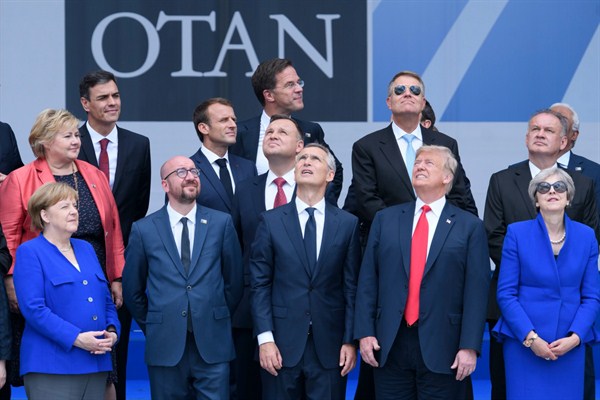The mood will be somber rather than celebratory when NATO foreign ministers gather Thursday in Washington to commemorate the organization’s 70th birthday. History’s most successful multilateral alliance has had quite a run. A tranquil retirement, however, is not in the cards.
NATO’s 29 members confront a daunting agenda. The alliance is grappling with how to deter Russian aggression against its eastern flank; combat Kremlin-inspired and Kremlin-sponsored cyberattacks and political subversion; address the retreat of democracy in several member states; reinforce a still-fragile peace in the Balkans; manage an orderly withdrawal from Afghanistan; improve burden-sharing; adapt capabilities in light of technological innovation; and craft a joint approach to China’s rise.
The biggest threat to NATO, however, comes from the most unlikely source: the U.S. president. The bombastic and unpredictable Donald Trump has undermined allied solidarity by cozying up to Russian President Vladimir Putin, unilaterally withdrawing from the Intermediate-Range Nuclear Forces (INF) treaty, berating allies to “pay up” or jeopardize their U.S. security guarantee, and actively considering pulling out from NATO. Trans-Atlantic relations have become poisonous. As two former U.S. ambassadors to NATO conclude, “NATO’s single greatest challenge is the absence of strong, principled American presidential leadership for the first time in its history.”

